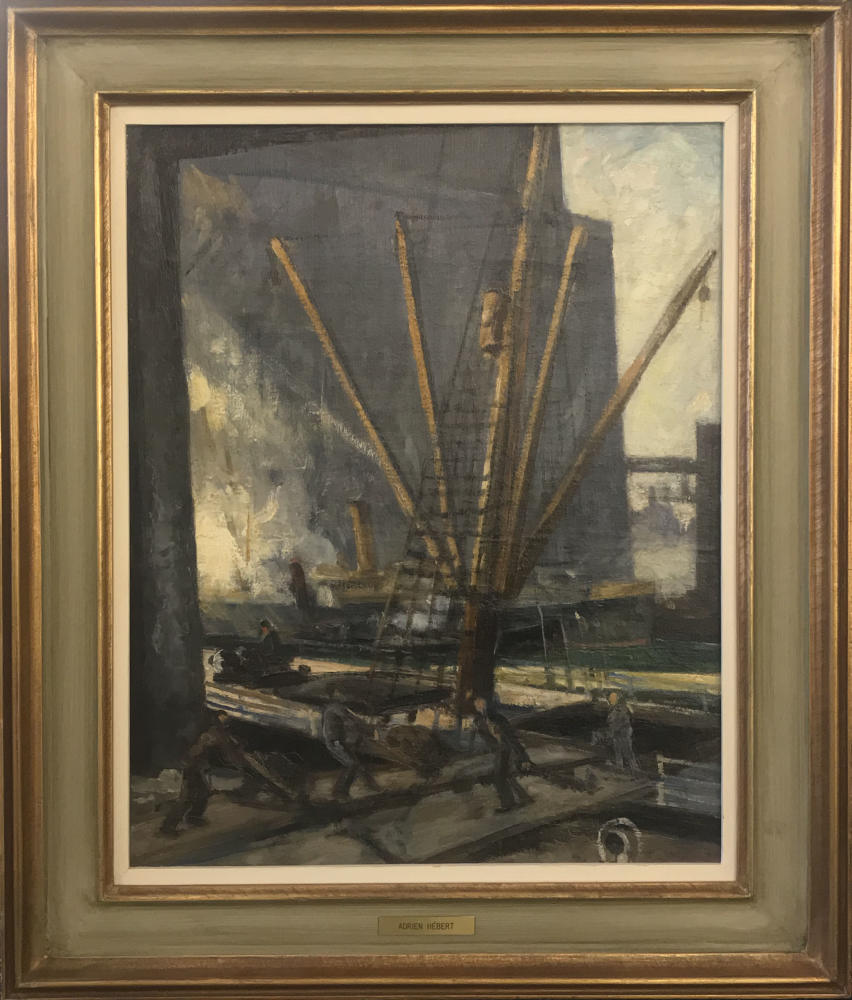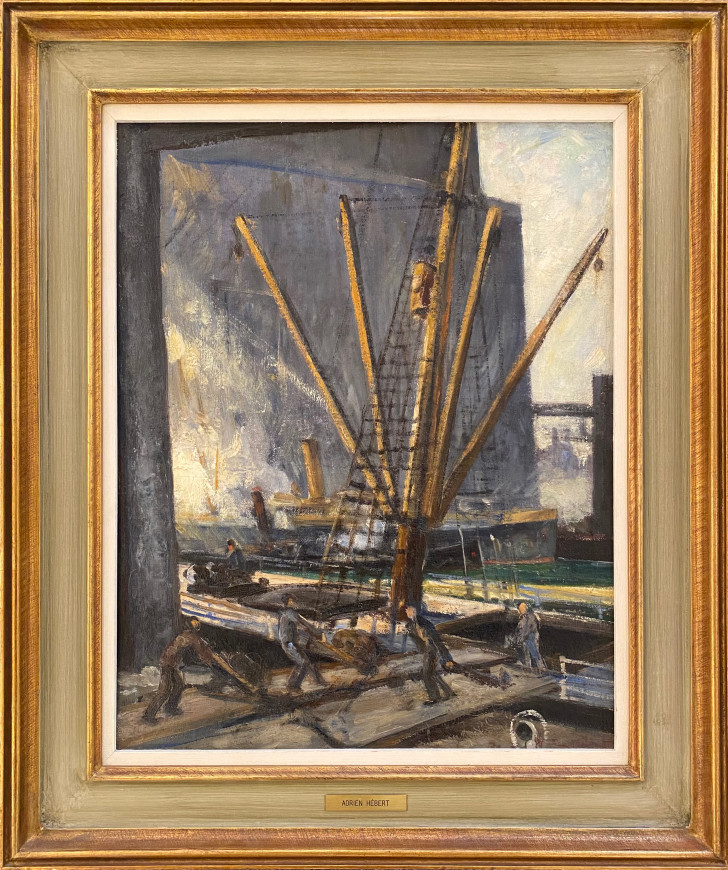-
Artworks
Adrien HébertPort of Montreal, 1927 (circa)1890-1967Oil on canvas20 1/8 x 16 1/8 in
51.1 x 41 cmSoldInscriptions
signed, ‘Adrien/Hébert’ (lower right); inscribed, "Je certifie que ce tableau est bien un original de Adrien Hébert / Louis Paul Perron" (verso, upper centre)Provenance
Private collection, MontrealThe location Hébert has painted is Victoria Basin. Hébert painted Montreal in transition to becoming a modern city. The development of the port was evidence of this evolution, and one which introduced significant economic prosperity to the City of Montreal. Victoria Basin served an important function in the activity of the Port of Montreal in its development from the early 1920s. In addition to two storage hangars, above them was then a novel conveyor system linking the dock to the grain silos, allowing for an efficient loading and unloading of ships. The opening of the St Lawrence Seaway in 1959, and the opportunity for vessels to bypass the City, impacted adversely on the port. Since the 1980s many of the industrial structures have been dismantled and the Victoria Basin, now called Bassin de l’Horloge, serves mostly small vessels, many of them leisure craft. The tower is the Clock Tower or Sailors’ Memorial Tower, originally built in 1921-22 to commemorate the sailors and merchant marines killed in World War I. The story is also that the tower and a supporting wall were built to hide from many views the hangars and the grain conveyor system on top.
In the exhibition catalogue for the celebrated Montreal Museum of Fine Arts travelling exhibition, 1920s Modernism in Montreal: The Beaver Hall Group, scholar Esther Trépanier begins her text: “In view of painter Adrien Hébert’s persistent preoccupation with urban modernization, which set him apart from other Quebec artists of the 1920s, his case merits individual attention. Of all the artists who exhibited with the Beaver Hall Group, Adrien Hébert stands out for his interest in picturing the commercial and industrial development of a contemporary city”[1].
On his works that depict the port as their subject, Trépanier writes, “About 1924 ... [w]hen he first began depicting the port, it had been just acclaimed the fourth year running as the world’s largest exporter of grain. [...] The port of Montreal, with its connection to a vast railway network, had become Canada’s main transport hub, rivalling America’s greatest Atlantic ports”[2].
Trépanier continues, “Hébert’s paintings of the port of Montreal exhibit a more linear, realistic style than his earlier works. The palette is generally composed of tones of grey and ochre but always subtly harmonized with touches of brighter colour, usually blue, green and red”[3]. She notes that in a great number of his works illustrating the port of Montreal, Hébert strives to capture the “monumentalization of the port’s architecture” and that natural elements — such as the sky, clouds, and water — are “pushed by the industrial motifs”[4]. Indeed, in the present Port of Montreal, Hébert chooses to accentuate the clear geometry and powerful masses of the industrial elements to express the vitality and strength of the port.
Trépanier concludes that, “Hébert’s images of the built structures associated with the commercial and industrial development were clearly a reflection of a positive, liberal perspective of the progress as compatible with harmony and beauty” [5].
_________________________________
Footnotes:
1. Esther Trépanier, “The Modern City: Adrien Hébert”, 1920s Modernism in Montreal: The Beaver Hall Group, (Montreal: Montreal Museum of Fine Arts, 2015), 20
2. Ibid., 212
3. Ibid., 214
4. Idem
5. Ibid., 218
1of 6











